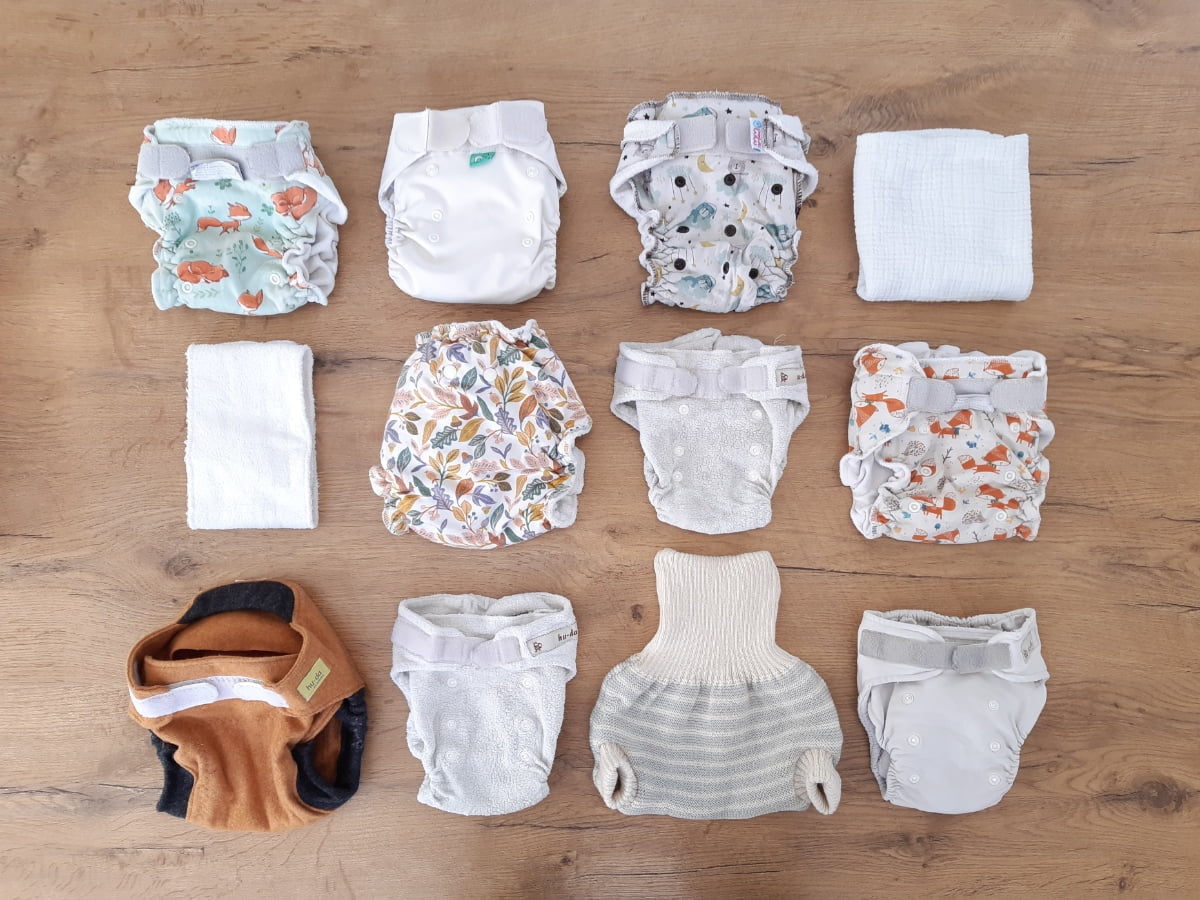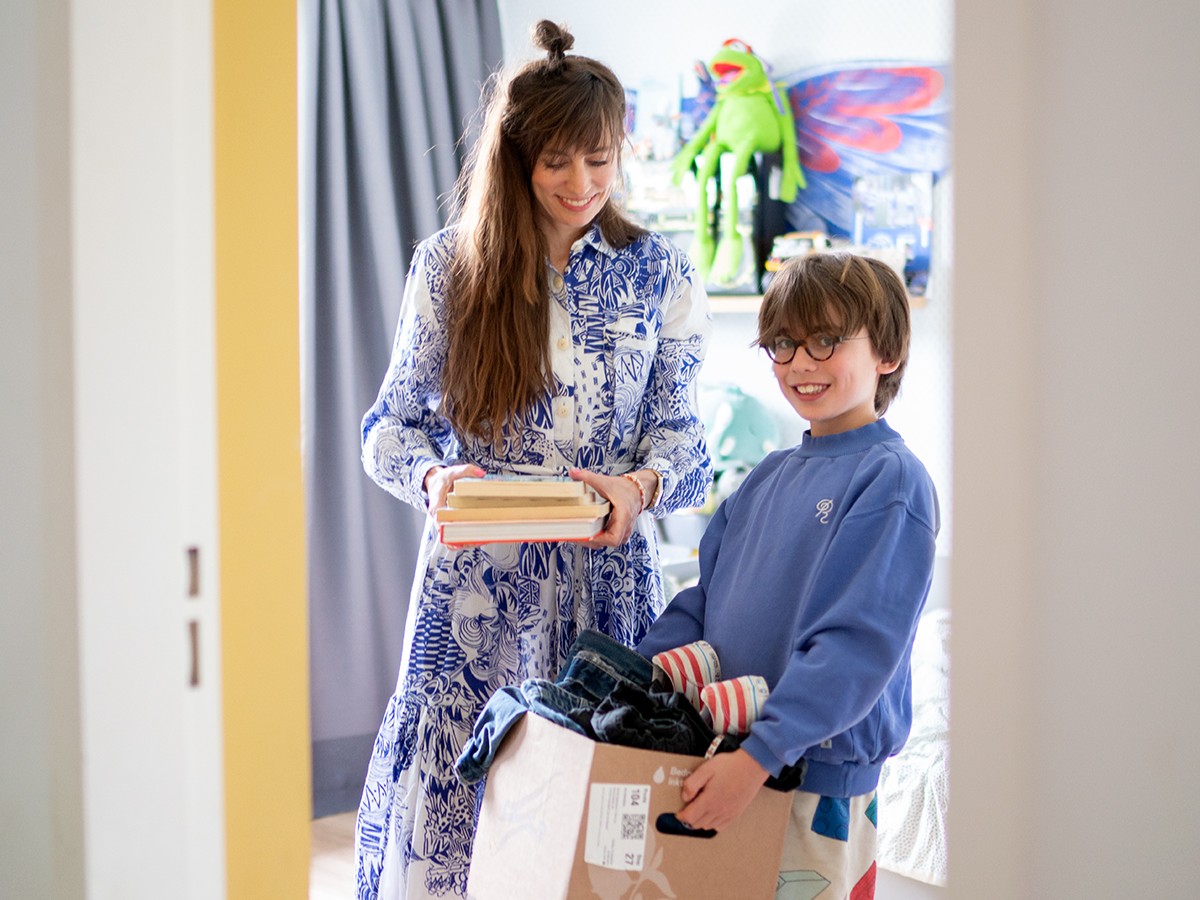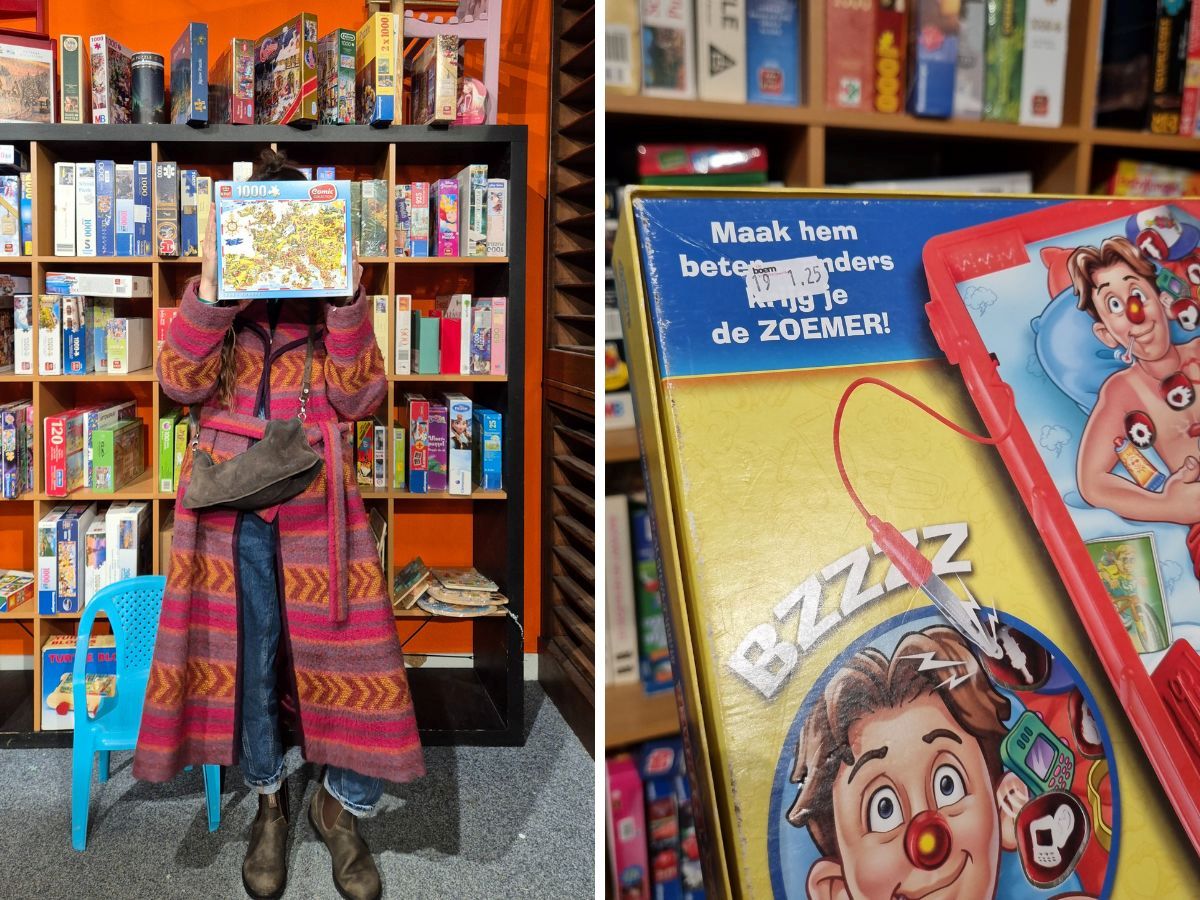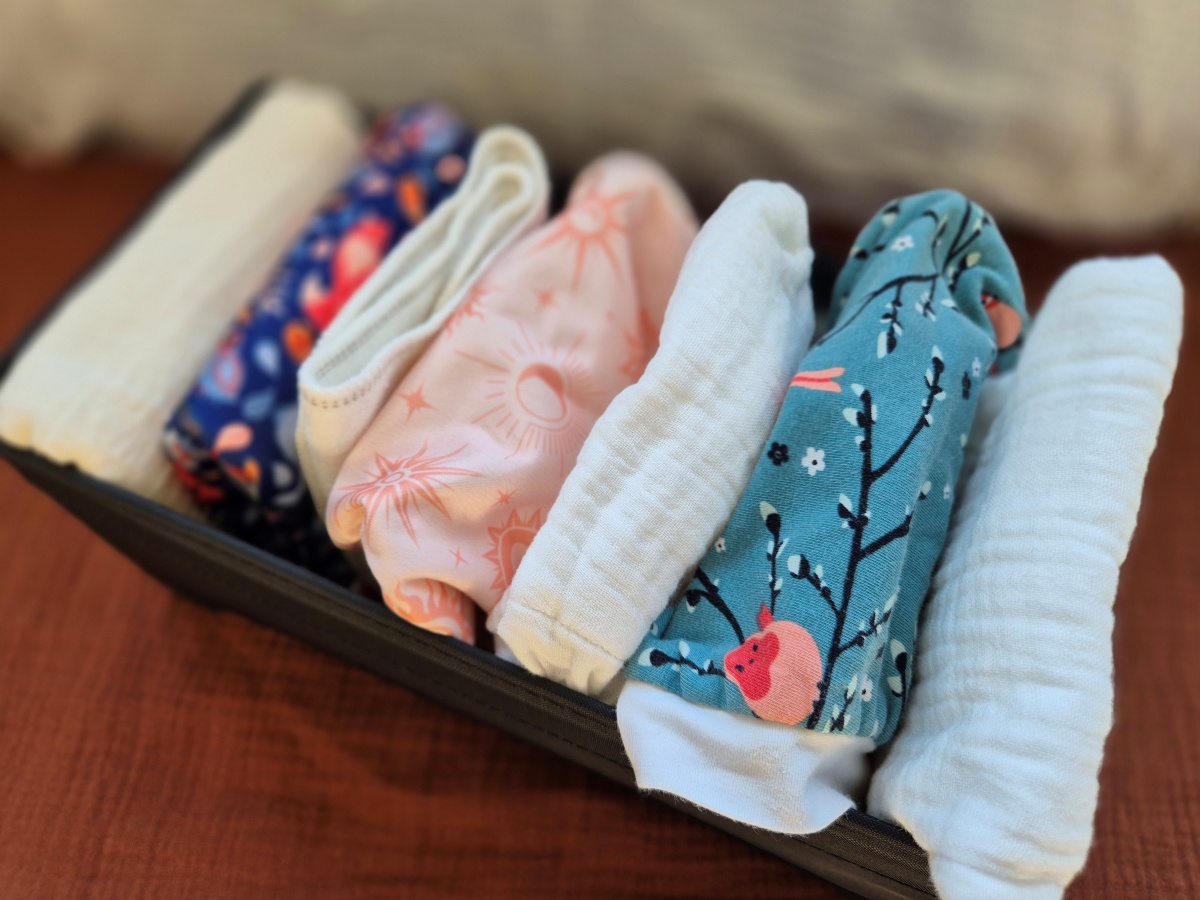There are different types of washable nappies: all have their own advantages in terms of ease of use, waste and cost. But there is an added advantage. Where disposable nappies are mostly made of plastic, super-absorbent plastic pellets and wood pulp, washable nappies seem a lot more natural and sustainable. By using washable nappies, your child has a lot less synthetic material on their skin. Is this assumption correct? Washable nappy consultant Kirsten, found out for you which materials are used for washable nappies and what the advantages and disadvantages of these materials are.
What are the different materials of washable nappies?
If you choose to use washable nappies, chances are you do so because you want to live more sustainably. After all, with washable nappies you can save a lot of waste: as much as three hundred kilos a year, according to Milieu Centraal! But did you know that not every washable nappy is equally sustainable? This is because there are big differences in the type of washable nappy and also in the material used. I previously wrote an article about the different types of washable nappies. In this article, you can read about the different materials used for washable nappies and how these materials are made.
Overpants materials
Every washable nappy needs a waterproof outer layer so that the nappy does not leak through. There are three types of material commonly used for this:
PUL
Most overpants are made of PUL. PUL means polyurethane laminate. That means a waterproof layer is made on top of a polyester fabric using synthetic fabrics. The advantage of this material: it is waterproof but breathable at the same time. PUL is also a thin and flexible fabric. The disadvantage is that the production of PUL is polluting for the environment.
TPU
TPU stands for thermoplastic polyurethane. The properties of TPU are the same as those of PUL: it is a thin, flexible fabric that is waterproof, yet breathable. The fabric is also made of polyester, only the difference with PUL is that the waterproof layer is made by using heat, instead of chemicals. TPU is thus better for the environment. Unfortunately, this material is less commonly used for washable nappies.
Wool
Would you prefer an overshirt made of natural material? That is possible with wool. Most wool pants are made of merino wool. Wool regulates temperature and is kind to your child's skin. An additional advantage for washable nappies is that wool also absorbs moisture. So wool is ideal as overnight pants. Because wool is self-cleaning and antibacterial, you only need to wash wool diapers once every one to two weeks (unless there is poo on it, of course). Be careful when washing wool, though, as this should be done on a special wash programme and with a special wool detergent. You should also wash wool pants after washing lanolising, so that it remains waterproof. Wool pants are slightly thicker than overpants made of PUL or TPU. Unfortunately, wool can cause animal suffering. Therefore, always choose organic wool that muesling free is. You can read more about wool overpants in this article.



The pants in the top row are made of PUL, while the pants in the bottom row are made of wool.
Absorbent materials washable nappies
Besides the waterproof pants, you also need an absorbent inner part. In some types of washable nappies, this is attached to the overpants; in other systems, it is two separate parts. In case you think: what is she talking about? In this article, I explain more about the different types of washable nappies. Regardless of what system washable nappies you use, there are five types of materials commonly used for the absorbent part of washable nappies. As this material has the most contact with your baby's skin, it is a good idea to look into these.
Cotton
Cotton is a natural material and has many advantages: it is sturdy and long-lasting, it is easy to wash and can withstand high temperatures. Unfortunately, there are also drawbacks to cotton: it takes a lot of water to grow and uses many chemicals, fertilisers and pesticides, which are harmful not only to the environment, but also to the people working in this industry. Therefore, always choose certified organic cotton. You can read more about cotton production and good labels in this item. Because cotton absorbs moisture fairly quickly and can also absorb a nice amount of moisture, it is well suited for washable nappies.
Bamboo
This soft and natural fabric is increasingly used for washable nappies. The advantage of bamboo is that it grows extremely fast: up to four centimetres per hour! Growing bamboo does not require pesticides and chemicals, but processing does, unfortunately. After I had seen this episode of Keuringsdienst van waarde about bamboo, I found out that bamboo fabric is often a lot less sustainable than it seems. Nevertheless, bamboo is often used as a material for washable nappies. Bamboo is slightly softer than cotton and can absorb a little more moisture. Because bamboo fibres are difficult to process, it is usually combined with another material, such as cotton or polyester, for washable nappies. Want to know more about bamboo? Then check out this article.
Hemp
Hemp is a natural material that can grow almost anywhere in the world. Currently, most hemp fabric comes from China. Hemp grows quickly and no chemicals and pesticides are needed to grow hemp. Few chemicals are needed to produce hemp dust, which can also be easily filtered out of the water again. Pretty sustainable, then, especially when you consider that hemp is a strong fabric that lasts a long time. Hemp can also absorb a lot of moisture, which is a big advantage for washable nappies.
Unfortunately, there are also drawbacks to hemp: the material absorbs water well, but slowly, and hemp fabric is quite hard. As a result, you prefer not to have hemp directly on baby's skin. However, hemp is ideal as a second layer, for example as a booster. Note that hemp takes a long time to dry. Because the material is so hard, hemp is often mixed with other fabrics, such as cotton, to make it softer.
Tencel
Washable nappies have recently started to be made from Tencel. Tencel is the brand name for Lyocell, which is produced by the Austrian firm Lenzing. This material is also called a ‘natural synthetic fibre’, as it has a natural base but is converted into usable fibres by chemicals. Tencel is made from wood from eucalyptus trees grown in a controlled and sustainable way. The eucalyptus tree requires less water than organic cotton and far fewer pesticides than ‘normal’ cotton. The harmless chemicals used to soften the wood pulp are filtered out of the water and reused. Tencel is a fine soft and temperature-regulating material that can absorb a lot of moisture. It also prevents the growth of bacteria, which is of course a great advantage for washable nappies. The range of washable nappies made from Tencel is not very big yet, but I think this could change in the coming years.
Polyester (microfibre)
This is the only synthetic material in the list. The advantages of polyester (microfibre) are that it is wonderfully soft and you are less likely to get stains in it. Also, nappies containing polyester tend to last longer. The special thing about polyester is that it absorbs moisture between the fibres rather than in them. As a result, the material can absorb moisture quickly, but not retain it as well. Think of a sponge. Polyester dries quickly because of this.
Another disadvantage of polyester: it is an artificial fibre made from petroleum. Plastic, in other words. This is also why not all babies can stand having polyester on their skin. Which seems like a big disadvantage to me personally: with polyester, microplastics can be released during washing and wearing. These tiny plastic particles can then end up in the water, ecosystem and even the human body. For this reason, I personally use washable nappies that do not contain polyester.
My favourite brands of washable nappies made from natural materials
As you could read, I prefer to use washable nappies made of natural material instead of synthetic fibres. Since I had to search quite a bit in the beginning to find washable nappies that don't contain polyester, here I share with you my favourite brands:
- Hu–da: I am especially a fan of the preformed cotton nappies for daytime and the bamboo nappies for at night. The hennep inserts from this brand I also like. And these woolen overpants are ideal for daytime use.
- Popolini has fine wool overpants for the night.
- Disana also makes beautiful wool overpants which we like to use at night.
- XKKO has good prefolds Made of organic cotton.
There are many other brands of washable nappies. The favourite brands of washable nappies of followers of thegreenlist.nl can be found in this item.
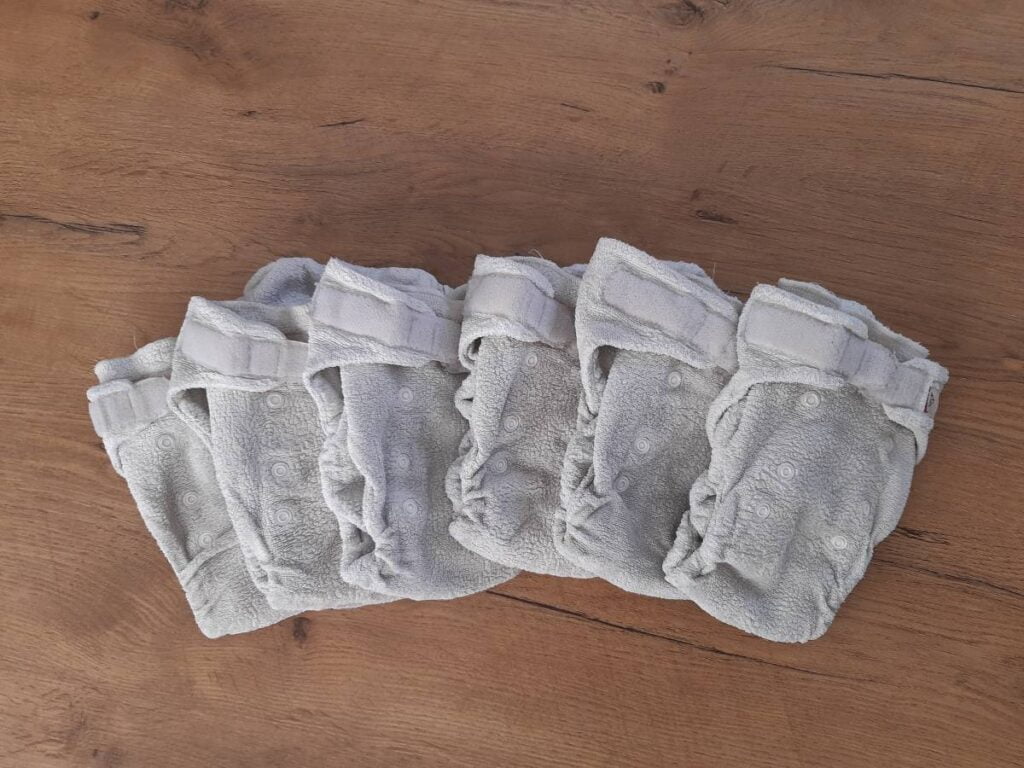
A mix of materials
Above, I have explained the different materials of washable nappies one by one. But as is the case with many items of clothing, a combination of different materials is often used for the absorbent part of washable nappies. For example, there are washable nappies made of bamboo and cotton, bamboo and polyester, hemp and cotton... and I could go on for a while. By combining different materials, you can benefit from the advantages of multiple materials. Of course, if this makes the nappies nicer to use or last longer, this is quite sustainable.
One drawback is that washable nappies made of a mix of different materials are, like clothing, more difficult to recycle. For example, a nappy made of 100 per cent cotton is much easier to recycle than one made of a combination of cotton and polyester. The latter requires a chemical process to remove one of the two materials.


Four different materials for the absorbent part of washable nappies. From left to right: two different types of 100% cotton, 60% bamboo with 40% cotton, 55% hemp with 45% cotton and 80% bamboo with 20% polyester.
Are washable nappies really that sustainable if the materials still require chemicals?
As you could read, chemicals are needed in the production process of most types of fabric. Sometimes it is necessary for growing the raw material (as with cotton) and sometimes you can't get away from it during the production process (as with bamboo). In case this startled you, remember that the production of disposable nappies is also polluting.
Disposable nappies consist of wood pulp, plastic and plastic pellets (to be precise, pellets made of Super Absorbent Polyacrylate, or SAP). Making wood pulp requires chemicals that cause water pollution. The plastic and plastic granules are made from petroleum. That this process also has a negative impact on the environment seems obvious. Moreover, the manufacturers of disposable nappies are not obliged to state on the packaging exactly what is in the nappy. And you need a whole lot of disposable nappies during your baby's lifetime. More than 5,400 on average! Whereas with washable nappies, you usually have enough with about 24 nappies, which you can often use for another child as well. Therefore, washable nappies are usually the most sustainable choice, even when you factor in the impact of washing. Read more in the article Are washable nappies actually more sustainable than disposable nappies?
Which materials are best?
As you could read, there are advantages and disadvantages to each material of washable nappies. So it is hard to say which material is the best or most durable. If you are new to washable nappies, I would recommend trying out the different materials to find out what you and your baby like best. By the way, washable nappies are also good to rent or borrow. I prefer cotton nappies during the day and bamboo (with cotton) nappies at night. As a booster for the night nappy and if I go out for a long time, I find hemp inserts ideal. As overlays, I really like wool, but I also have a few (second-hand) PUL overlays because they are a bit thinner. If you have any questions or comments, you know where to find us (find the mail button at the bottom of this page).
More sustainable tips from thegreenlist.nl
- Want to know exactly how to wash wash washable nappies? In this article, we explain step by step how best to wash wash washable nappies.
- Also curious about what sustainable materials clothing is made of? In this article, you will read which fabrics are sustainable and which are not.
- Curious about the negative impact of (polyester) fleece on the environment? You can read all about it in this article.
- Still looking for a sustainable baby outfit? In this article, find out what you really need and what can be done second-hand.
Sources: Milieu Central about washable nappies, Nappy's.nl on the materials overpants, Green Butt on the different materials of washable nappies, Stoffwindel Academy on materials washable nappies, Cosh! and Ecotex About hemp, Het Duurzame Warenhuis and When Sarah Smiles About Tencel, Cosh! on recycling textiles. Photo credits: cotton: Sze Yin Chan (Unsplash), bamboo: Emre Orkun Keskin (Pexels), hemp: Matthew Brodeur (Unsplash), baby: Taisiia Shestopal (Unsplash), other photos: Kirsten Schoner.

